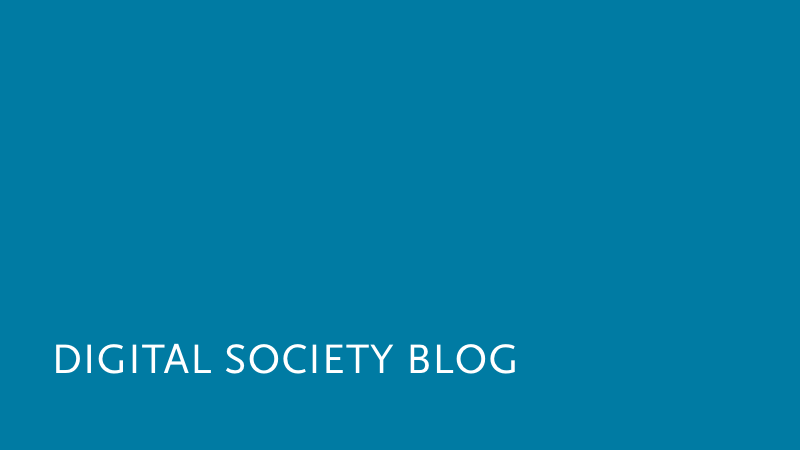Making sense of our connected world

Black box infrastructure: Do we need transparent interconnection arrangements?
The internet is seething below the surface. Network operators, internet service providers (ISPs), content delivery networks and network-oriented content providers are caught in a struggle for the best position to earn money with infrastructure services such as providing, distributing and forwarding content.
The internet’s success story
Being a network of networks, the internet is dependent on a situation in which network operators and other infrastructure players team up and agree on terms for the exchange of traffic (peering). Estimates suggest that in June 2012, the internet consisted of more than 200,000 peering connections between the different Autonomous Systems. (Feldmann, 2013) This high number of interconnection agreements underlines that there is a shared understanding about the usefulness of peering for the internet.
Tussles draw attention to peering policies
However, in spite of the many successful agreements, the competitors may not always succeed in agreeing on peering conditions. Lately, internet users could perceive some of the “tussles” (Clark et al., 2005) between the major players. Because some of the recipient and provider networks had not been interconnected with the required bandwidth, customers of some ISPs could only access certain content with a lower bandwidth.
Jon Brodkin has compiled a list of recent cases (Brodkin, 2013), pointing out the complex market relationships between various types of business and their conflicts of economic interest in detail. It is worth reading, for it is quite an achievement to investigate and disclose facts about these conflicts – as the companies tend to be reluctant to give insight into their interconnection arrangements as this presentation at an industry meet-up indicates (Blanche, 2013).
Interconnection arrangements prestructure internet-communication
Beneath the economic conflicts regarding the question of who owes whom how much for passing through traffic lies another, less-noted aspect of the peering policies: By means of the interconnection arrangements, the infrastructure players have significant influence on how internet users can gather information and communicate.
Internet service providers, network operators and content delivery networks act as information intermediaries. For instance, their interconnection agreements predefine possible internet-routes for the data packets – long or short, fast or slow, regional or international. Thus – among other influences at user level – they affect the experience of internet use and also predetermine which jurisdictional reaches the exchange of information passes.
Internet infrastructure as a black box for users
Internet users may experience peering conflicts – internet connection stalls during data-intensive video streaming, for instance – even when the bandwidth on the last mile should be sufficient. However, they will hardly be able to recognize the specific conflicts or assign them to the involved actors, as interconnection arrangements are based on private agreements and are therefore to be considered as business secrets. Affected users can only speculate about the cause of an impaired connection. The internet infrastructure’s “black box” starts right behind the modem at home.
Create transparency?
The question must be raised whether the influence of the interconnection arrangements is significant enough to invoke a call for action. However – due to the lack of transparency – it is difficult to accurately assess this question or determine to what extent online experience is influenced by the peering policies. One possibility would be to force providers to disclose their interconnection agreements, though such a significant interference with the market should be well considered.
Enforceable bandwidth performance promises
Usually, customers have no right to be able to follow up the service provision process for a piece of service or a delivered product – except for some product ranges that rely on the requirement of “knowing what’s inside”, such as organic or fair trade products. So is it important to know what’s inside the internet? Would it not be sufficient if internet access providers were to offer enforceable performance standards? Instead of advertising “up to” bandwidth ranges, they could guarantee minimum standards.
However, apart from inherent technical difficulties regarding minimum bandwidth standards on the last mile, this would not solve the quality problem. If an internet access provider were to promise customers a certain bandwidth performance for downloads, this would only have significant effect if the provider was also to guarantee a certain connection quality for the incoming traffic by means of interconnection arrangements. In case of doubt, the access provider might then be obliged to provide information on its own peering capacities with other content providers and network operators – a scenario that access providers will most probably not appreciate.
Performance standards would not solve the question of routing
Even if performance issues could be arranged to satisfy both the companies and the users, other questions regarding the interconnection arrangements would remain. Because of the recent intelligence operations, citizens may become sensitized to the question what jurisdictional reach their data is subject to. For example, cloud service providers are now trying to improve ways to meet their customers’ policy-related demands – some of them by guaranteeing that their customer’s data will be stored in predefined locations only. Also, there are likely to be more concerns regarding interconnection arrangements. More transparency could allow insight concerning the question which jurisdictional reaches communication-data travels through and what possible interventions might arise from this.
Perhaps internet users would not be able to gain more insight from new transparency regulations, because the actual routing of data packets on the internet is a dynamic process that can hardly be conceived without technical knowledge – but information regarding the interconnection arrangements could be processed and made available to internet users by specialized information services.
What becomes visible can be examined
The tussles between network operators, internet access and content providers have a positive effect: they draw attention to matters of internet infrastructure. What becomes visible are the players and practices that provide access to the wonderful world of innovative applications in the first place, but also prestructure our communication. Research needs to be undergone to find out what structural principles affect the interaction between technologies, infrastructure operators and internet users. Transparent interconnection arrangements could be a measure that would allow for systematic research.
References
- Blanche, M. (2012). Peering and regulation – a european view. Global Peering Forum 2012 [Presentation]. Retrieved from https://www.peeringforum.com/presentations/GPF7.0/gpf-2012-regulation-z.pdf
- Brodkin, J. (2013). Why youtube buffers: The secret deals that make—and break—online video. Ars Technica. Retrieved from http://arstechnica.com/information-technology/2013/07/why-youtube-buffers-the-secret-deals-that-make-and-break-online-video
- Clark, D., Wroclawski, J., Sollins, R., & Braden, R. (2005). Tussle in cyberspace: Defining tomorrow’s internet. IEEE/ACM Transactions on Networking, 13(3), 462-475. doi:10.1109/TNET.2005.85022
- Feldmann, A. (2013). On the importance of internet exchange points for today’s internet ecosystem [Online Video]. Berkeley, CA: International Computer Science Institute. Retrieved from http://youtu.be/LjR9x5Vc3S4?t=33m11s
This post is part of a weekly series of articles by doctoral candidates of the Alexander von Humboldt Institute for Internet and Society. It does not necessarily represent the view of the Institute itself. For more information about the topics of these articles and associated research projects, please contact presse@hiig.de.
This post represents the view of the author and does not necessarily represent the view of the institute itself. For more information about the topics of these articles and associated research projects, please contact info@hiig.de.

You will receive our latest blog articles once a month in a newsletter.
Research issues in focus
Counting without accountability? An analysis of the DSA’s transparency reports
Are the DSA's transparency reports really holding platforms accountable? A critical analyses of reports from major platforms reveals gaps and raises doubts.
Emotionless competition at work: When trust in Artificial Intelligence falters
Emotionless competition with AI harms workplace trust. When employees feel outperformed by machines, confidence in their skills and the technology declines.
Defending Europe’s disinformation researchers
Disinformation researchers in Europe face lawsuits, harassment & smear campaigns. What is behind these attacks? How should the EU respond?




